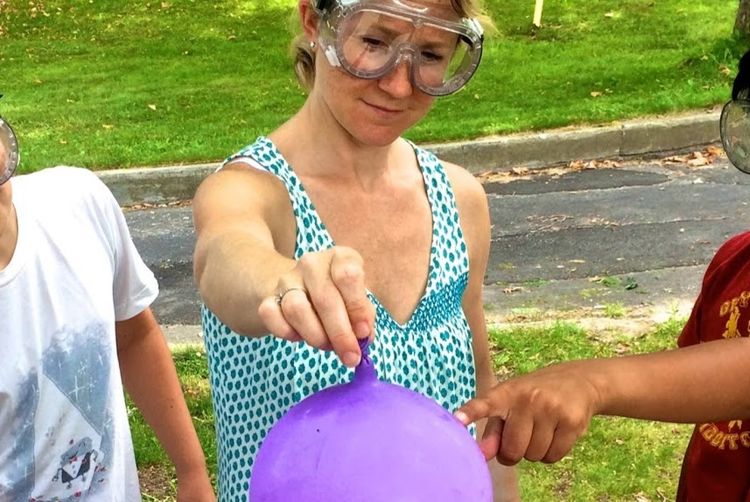STEM at School
Engineering Materials Shaped by Teachers as Learners

Why does a vibrating string create sound? How do wave pulses become the zeros and ones in digitized signals?
If you’re a teacher, you know it’s hard to find the best resources for tackling these questions, especially in ways that also help you parse and teach to the latest Science and Technology/Engineering standards.
That’s why we’re excited about the curriculum and professional development work going on at the Chatham Marconi Maritime Center.
The Chatham Marconi Maritime Center (CMMC) is a great place for anyone to learn about wireless communication and its history on Cape Cod. But it is also a place where teachers are diving into learning about sound waves and light waves and how they are used in technology for information transfer.
These are the big ideas within the world of much modern-day technology. And they’re at the heart of the Communications Engineering and Design standards within the Massachusetts Science and Technology/Engineering framework.
For example, the latest standards require first grade students to be able to demonstrate that vibrating materials can make sound and to be able to use tools and materials to design and build a device that uses light or sound to send a signal over a distance.
Annie Haven, a science teacher at Monomoy Regional Middle School (she's in the picture above, working with students to test the effects of liquid nitrogen on a balloon) is also a key educator at CMMC. In her experience with the standards, she says, "We have found that teachers can engage their first-graders in building a drum or string phone out of simple materials. But," she adds, "they tell us it’s not obvious how to appropriately link these projects back to the wave and signals concepts that are in the standards.”
Another example: at the middle school level, students need to understand wave pulses and how they are related to sound and signals, specifically digitized signals. But teachers, Haven explains, want to know more about waves and their applications in order to do this work around digitized signals and encoding in their classrooms.
Thanks to a major grant from the Verizon Foundation in 2013, CMMC has set to work to develop lesson plans, materials, and professional development activities that support teachers’ own learning and their teaching. They have also partnered with the Monomoy Regional School District to offer professional development to teachers across the Cape and share what they have developed.
At CMMC, educators like Annie Haven who are in the classroom now, or teachers who have been in the classroom and who have curriculum-writing experience, are working with volunteer engineers who have rich content knowledge and experiences. Together they are creating lessons that give students new ways into the fundamental science behind our modern communications systems and the technologies that make them work.
This summer at professional development events sponsored by our STEM Network, we saw teachers learning about waves and their applications. The teachers noted that having these experiences as learners really helped them approach the curriculum differently. Using those insights, they then created ways for students to make prototypes that solve communications problems or meet communications needs.
By combining professional learning and materials development, CMMC is supporting teachers as they teach new concepts in rigorous and exciting ways. Annie and others at CMMC have noted that after using the lessons in classrooms, the lessons are tweaked and revised. We are impressed with the rich learning opportunities these materials provide for students.
Want to see the results for yourself? A lesson for Grade 6 is shared above.
Professional development activities for teachers will be organized for later this fall by CMMC, so keep checking their website and ours to stay up-to-date.
We also hope to offer an event in January 2016 to encourage more student—and teacher—learning in the areas of communication engineering and design.